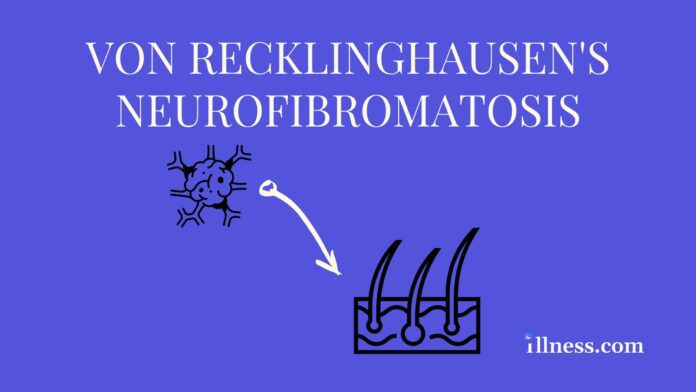Overview Of Neurofibromatosis Type 1 (NF1)
Neurofibromatosis Type 1 (NF1) is a condition characterized by changes in skin coloring (pigmentation) and the growth of tumors along nerves in the skin, brain, and other parts of the body. The signs and symptoms of this condition vary widely among affected people.
Neurofibromatosis-1 (NF1) is an inherited disorder in which nerve tissue tumors (neurofibromas) form in the:
- Upper and lower layers of the skin
- Nerves from the brain (cranial nerves) and spinal cord (spinal root nerves)
Commonly Associated With
- Neurofibromatosis 1
- NF1
- Peripheral neurofibromatosis
- Recklinghausen disease, nerve
- Von Recklinghausen disease
Causes Of Neurofibromatosis Type 1 (NF1)
NF1 is an inherited disease. If either parent has NF1, each of their children has a 50% chance of having the disease.
NF1 also appears in families with no history of the condition. In these cases, it is caused by a new gene change (mutation) in the sperm or egg. NF1 is caused by problems with a gene for a protein called neurofibromin.
Symptoms Of Neurofibromatosis Type 1 (NF1)
NF causes tissue along the nerves to grow uncontrollably. This growth can put pressure on affected nerves.
If the growths are in the skin, there can be cosmetic issues. If the growths are in other nerves or parts of the body, they can cause pain, severe nerve damage, and loss of function in the area the nerve affects. Problems with feeling or movement can occur, depending on which nerves are affected.
The condition can be very different from person to person, even among people in the same family who have the same NF1 gene change.
“Coffee-with-milk” (café au lait) spots are the hallmark symptom of NF. Many healthy people have one or two small café au lait spots. However, adults who have six or more spots that are bigger than 1.5 cm in diameter (0.5 cm in children) could have NF. In some people with the condition, these spots may be the only symptom.
Other symptoms may include:
- Tumors of the eye, such as optic glioma
- Seizures
- Freckles in the underarm or groin
- Large, soft tumors called plexiform neurofibromas, which may have a dark color and may spread under the surface of the skin
- Pain (from affected nerves)
- Small, rubbery tumors of the skin called nodular neurofibromas
Exams & Tests
A health care provider who treats NF1 will diagnose this condition.
The provider may be a:
- Dermatologist
- Developmental pediatrician
- Geneticist
- Neurologist
- The diagnosis will most likely be made based on the unique symptoms and signs of NF.
Signs include:
- Colored, raised spots (Lisch nodules) on the colored part (iris) of the eye
- Bowing of the lower leg in early childhood may lead to fractures
- Freckling in the armpits, groin, or underneath the breast in women
- Large tumors under the skin (plexiform neurofibromas), which can affect the appearance and put pressure on nearby nerves or organs
- Many soft tumors on the skin or deeper in the body
- Mild cognitive impairment, attention deficit hyperactivity disorder (ADHD), learning disorders
Tests may include:
- Eye exam by an ophthalmologist familiar with NF1
- Genetic tests to find a change (mutation) in the neurofibromin gene
- MRI of the brain or other affected sites
- Other tests for complications
Treatment Of Neurofibromatosis Type 1 (NF1)
There is no specific treatment for NF. Tumors that cause pain or loss of function may be removed. Tumors that have grown quickly should be removed promptly as they may become cancerous (malignant). The drug selumetinib (Koselugo) was recently approved for use in children with severe tumors.
Some children with learning disorders may need special schooling.



